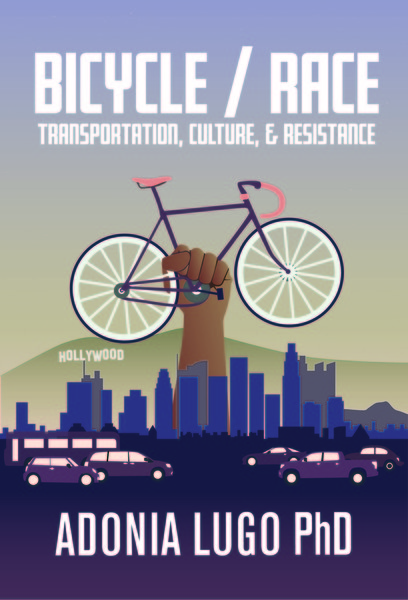CicLAvia is free to participants. The experiences you have of the day come from the people surrounding you and the interactions you have with the urban environment.
Disneyland costs at least $80 for a one day pass. The other people in the park become a nuisance, something to be avoided by using fastpasses and smartphone apps that tell you the best moment to get in a given ride's line.
 |
| Monorail |
There's a lot of car culture at Disneyland.
 |
| I'm not a fan |
One of the "lands," Toontown, brings to fiberglass life the setting of the 1990 movie Who Framed Roger Rabbit?, a film that comes up surprisingly often when I tell people about my research. Ah, they sigh, the beloved Red Cars used to run all over, General Motors bought up all the tracks in the 50s and made people buy cars, what a shame. This is the conflict the movie dramatizes, like how Chinatown sort of tells the story of William Mulholland. In reality, people in LA started buying cars and rejecting streetcars in the 1920s, voting against purchasing the failing streetcar lines because they saw the privately-owned systems as corrupt and greedy.
 |
| Real trolleys were a lot more crowded than this by the 1920s, kid |
Disneyland is a great example of "enchantment engineering," the idea that designers can create controlled simulations of experiences and then sell them to consumers. This idea has been picked up by urban planners. In a 2008 essay, Yves Winkin and Sonia Lavadinho described the imagined response of city inhabitants to urban planners' efforts to engineer enchantment this way: "Sure, I know it is still my good old dreary street, but I will act as if it had dramatically changed for the better." Improving neighborhoods becomes a wink-wink-nudge-nudge agreement between planners and users, as though the latter have no role in placemaking and are merely an audience. I don't know about you, but I'd rather build my street through my daily practices than buy into a vision of urban design as collusion in fantasy. In fact, I find this conceptualization of public space as something to be packaged and consumed a lot more frightening than a day at Disneyland.







